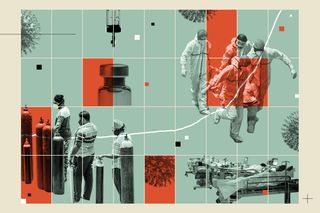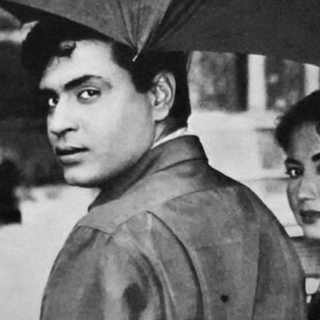
Covid19 Is the First Global Tragedy in a Post‑Truth Age. Can We Preserve an Authentic Record of What Happened?
Perhaps the most critical role of remembering is to hold people in power accountable for their missteps, ignorance — even their hubris.

“An Appeal,” reads a monochrome cut-out, with two exclamations.
The words “Oxygen Gas” follow, explaining the urgency. “We now appeal to our Customers who have taken the cylinders away but have not returned them as yet, to be sharp in returning them,” N. Powell & Company, a pharmaceutical company, urges in a clipping from 1918. This was Bombay, during the second wave of the global influenza pandemic in India.
Same city, a different name, a century later. “Covid19 Resources: Mumbai,” curated as an Instagram Read, had a slide urging people to return their oxygen concentrators. It recals the monochrome plea — both, along with stray anecdotes and photographs, carry evidence of life during the pandemic.
Covid19 is the first global crisis in the digital age. Unlike its historical counterparts, the pandemic’s memory is directly loaded onto the digital ecosystem — visibly marked by misinformation, the blurring of fact and fiction, and the complicated nature of “truth” during the pandemic.
It is hard to document the story of a crisis — even harder for one unfolding, and changing, by the minute.
*
The narration of any crisis influences public memory, and also how the world prepares for the future. “If something is not recorded adequately and is not discussed, it can easily slip from public consciousness,” Manu S. Pillai, a historian and author, says. He cites the example of the Bengal famine — the devastating crisis of 1943.
Historically speaking, pandemics have suffered from patchy records and jaded pieces of literature; they garner attention from virologists, experts, and scientists for research, but not from the public. This is partly due to lack of access to information, and partly because of the evolving nature of knowledge.
This pandemic, however, is “a test case for the making of global memory in the new media ecology,” Astrid Erll, a memory scholar at the Goethe University Frankfurt in Germany, wrote in September in the Memory Studies.
The rapid cadence of evolving knowledge during this pandemic has triggered what experts call “rapid-response collecting.” People are processing their thoughts, updates, feelings — remembrances as a personal inquiry — in real-time. These records exist in the form of personal Covid diaries on Instagram or Twitter threads. The anecdotal evidence, of isolation and lived narratives, provides a reference point for grief — and life — during this period.
The U.S. National Library of Medicine, for instance, launched a web archive even before the pandemic was officially named — they archived the very tweet of the World Health Organization naming SaRS-COV-2. The Covid19 Memory Archival Project reads like a story of the pandemic told from multiple perspectives — someone lamenting the loss of school life, someone else enjoying the week between freedom and back to “quarantine life.” Museums in the U.K., the U.S., Germany, Vienna have all started similar virtual collections of people sharing snippets from their lives.
“Perhaps there could [also] be a model of a quarantine room, or a Covid ward might even make it into museums,” Sucheta Mahajan, a professor at the Centre for Historical Studies at Jawaharlal Nehru University, muses.
Related on The Swaddle:
Covid19 Misinformation Is Spreading Across 87 Countries, Costing Lives: Study
There are some characteristics common to these attempts to archive the pandemic: they are crowdsourced, transparent, and democratic. These community-led memory preservation projects approach social memory from the bottom up — recording individual stories of individual people. Experts note that recollections from past pandemics or crises are mostly larger observations about the society or nation, documented by the state and officials; personal affairs and reflections are often lost. “There was not much of a culture of writing your own life stories [previously]. The private life was missing — people weren’t comfortable talking about their personal matters,” Mahajan explains.
Memorialization and archiving is almost always done as an afterthought — in the order of things, it automatically comes last. But this pandemic has witnessed real-time records, human-centric stories, and engagement within digital memory, forming a new model of memorialization.
“It’s not happening in the way, say you have a Holocaust museum — it is not a big exercise, or not even a big government project,” says Mahajan.
Channels of communication are also plenty — from WhatsApp groups sharing crucial information to Telegram channels talking about vaccine registration, there is transparency and engagement. Newer attempts are also more humanizing in that they include stories and pictures of people instead of just their names.
Notably, any crisis is a social and cultural event, and taking stock of everyday life — in terms of what happened, what life looked like, how did people grieve and recover — carries historical value.
“Tomorrow, if there are people who want to study what happened [during the pandemic], they will perhaps look at mail correspondence, your WhatsApp messages, and so many ways in which there will actually be minute-by-minute documentation of so many processes,” Mahajan says. “This is something very unique, something that is part of memory only [for now].”
*
Traditional record-keeping has adapted in the modern age. Journalists and civil society are able to instantly upload images and reports on social media or websites. This immediate access to information allows us to be aware of the crisis as it unfolds around us in real-time, even as official government records paint a different picture.
Manu S. Pillai notes the powerful impact photographs have. “I cannot get those images of mass funerals and of corpses by the Ganga out of my mind. They tell you of the scale of the crisis.”
A regional newspaper in Gujarat published the names of all the people who died, to not only capture the gravity of the crisis but also to contradict an official narrative, accused of underreporting and fudging data.
In some ways, the way language has evolved over the last year is also a reflection of the crisis. The dictionary has reinterpreted harsh words like lockdowns and curfews in a completely new light; governments have weaponized vocabulary to illustrate “a battle against an invisible enemy.” Consider this: the words “peak” and “wave” will rarely bring to mind mountains or beaches now.
Shakuntala Banaji, who teaches digital media and communications at the London School of Economics, says even legal proceedings, inquiries, and public hearings in the longer-term are “accurate ways of reflecting on the culpability and responsibility of those meant to manage such disasters, and holding them accountable.”
“The most devastating, macabre, and heartbreaking one in this pandemic might be the numbers of recorded goodbye messages, songs, final moments between dying patients and their distant families, some utterly private, others gone viral, and the accounts given by medical practitioners of these final scenes.
“Many of these are mundane rather than memorable, but put together they form a formidable historical archive,” Banaji says.
*
Related on The Swaddle:
Podcast: Does Trauma Make You Stronger?
Covid19 is also the first pandemic in a post-truth world — there is disagreement about the most banal things. “The pandemic has revealed only the general inadequacy of our data infrastructures and assemblages to solving pressing social issues but also the more general shift towards a ‘post-truth’ disposition in contemporary social life,” Taylor Shelton, who researches digital geographies and socio-spatial theories, writes in the paper “A Post-Truth Pandemic?”
There are no longer truths and lies — and while the lack of binary reflects the complexity of any crisis, it also erases any sanctity of “fact.” The narratives and counter-narratives are plenty. “The levels, speed, and reach of electronic disinformation – both medical and political – seem to be a hallmark of a social media era pandemic,” Banaji notes.
Real-time updates around medical research — related to the virus or vaccines — are being weaponized to fuel anti-vax propaganda and Covid19 denial. Any criticism or probing about vaccine efficacy are taken out of context; general ambivalence towards hospital staff or doctors echoes an air of distrust.
“Far right suprematist groups, including those in power in India, have been using social media to spread political disinformation against religious minorities and further deepening the crisis,” Banaji says. The chaos and misinformation have dwarfed the “right answer,” if there was one.
Is it possible, then, to have an authentic record of the pandemic? “I firmly believe that whatever the media around whether during the First World War, decolonial struggles, or the present social media era — it is possible to construct accurate accounts and to distinguish more and less authentic records of events,” Banaji further argues.
And arguably, misinformation and distorting reality are not modern-day phenomena. Ideological political interests, coupled with other vested interests, have always been the biggest threats to maintaining accurate records, according to Banaji. Most mediated crises have seen massive panic, as well as propaganda and disinformation which circulates as misinformation, but the narration of large-scale tragic events is often fragmented, confusing, and contradictory while they are occurring and after. “The levels, speed, and reach of electronic disinformation – both medical and political – seem to be a hallmark of a social media era pandemic,” Banaji says.
There are certain truths that will have consensus: There was a pandemic, there was a virus, we called it SARS-CoV-2 (or Covid19), it spread across continents, it killed millions, and there were efforts to control it through vaccination drives.
The more complicated truths then address the how and why. While official records might still claim there was no migrant exodus, perhaps we can trust media reports or photo exhibitions to travel carry people’s anguish through time. Or when official figures show a conservative estimate of Covid19 deaths, photos of riverside graves will tell a story of their own.
Claims of an abundant supply of oxygen or resources might be countered with social media archives of Twitter or Instagram SOS Appeals, Sucheta Mahajan reckons. And while the official narrative would maintain there was no vaccination shortage, Co-WIN memes or Telegram chats might give a more authentic glimpse. There is a Covid19 “Government Order Tracker” in India that does exactly what it says — take stock of every health and policy order introduced by state governments and central government during the pandemic.
Arguably, any digital memory is not composite — particularly in a nation where more than half of its population is disconnected from the internet. Those who do not have access to social media, the internet, and the technology of this nature are sidelined.
“When it comes to collecting testimonies, that exercise is done in a conscious kind of way, it’s always the educated, more vocal, middle-class sections whose voices will be predominant,” Sucheta Mahajan says.
The pandemic then creates versions of reality for different people, where some are more impacted than others. Can any record/documentation do justice to this varied experience? “No, but we must still make an effort to record as many experiences as possible,” Manu S. Pillai argues.
It is crucial to rely on non-digital forms of memory documentation. “There, old-fashioned journalism, with people trekking into villages with cameras and notepads, is perhaps key.” Other ways include paying more attention to narratives beyond the digital walls, and finding ways to digitize those.
Digital history is more than an argument about the past — it is a scaffolding of the present and future. It is written in black ink on different kinds of pages, and reminds us of what worked, what didn’t, and what needed work.
Perhaps the most critical role of remembering is to hold people in power accountable for their missteps, ignorance — even their hubris. Privilege, indifference, state apathy, hypocrisy, and much else could then be laid bare powerfully in the form of a digital history.
“This was not a tragedy that was inevitable: with basic planning, much of it could have been averted,” Pillai says. The consensus is evident: public health was neglected, gold came in the form of drugs or oxygen cylinders, the internet and social media offered respite to some — and any efforts to compromise the reach of digital platforms, intimidate free speech using FIRs or rules will be seen as a tell-tale sign of a larger problem.
If people were to look back at this moment, Pillai says the “terrible” record of the state might stand out. “Besides the suffering, it is also the story of the failure of those in power to do something with that power… whether we hold our leaders at all levels to account, or whether we will forget.”
Saumya Kalia is an Associate Editor at The Swaddle. Her journalism and writing explore issues of social justice, digital sub-cultures, media ecosystem, literature, and memory as they cut across socio-cultural periods. You can reach her at @Saumya_Kalia.
Related


Indians Are Trading Pangolins Illegally on YouTube
